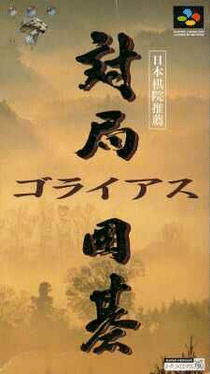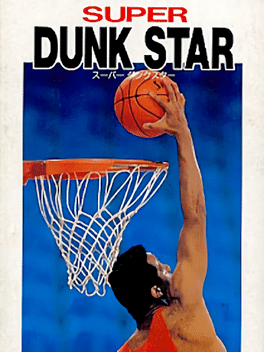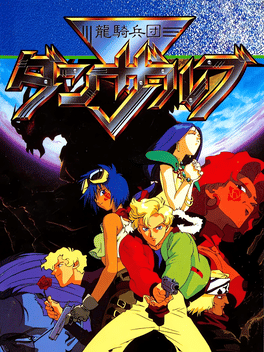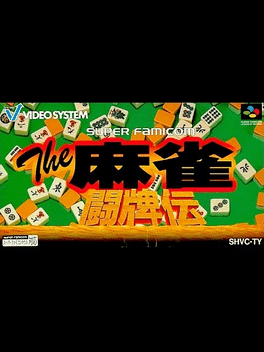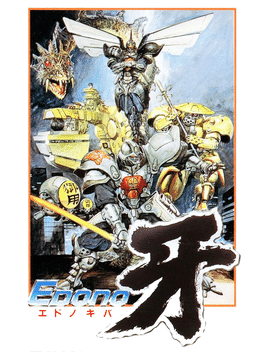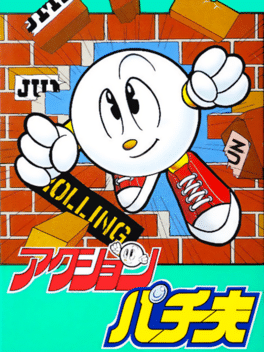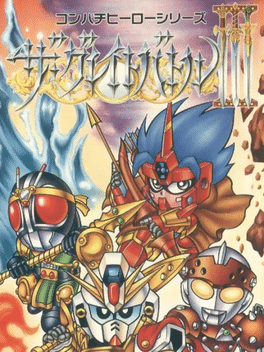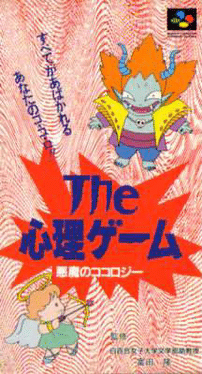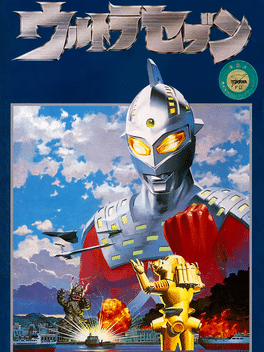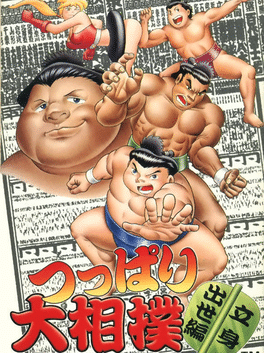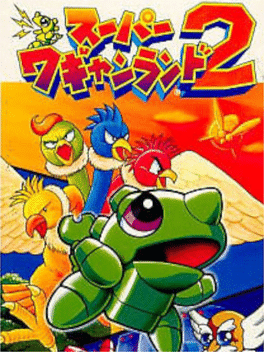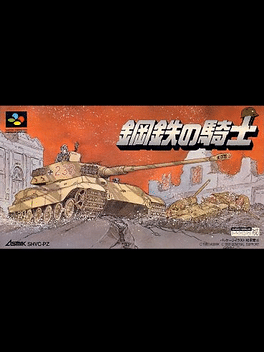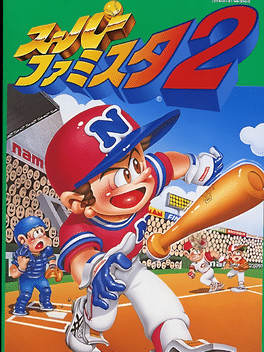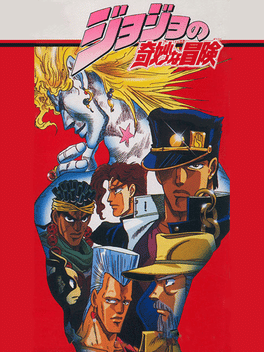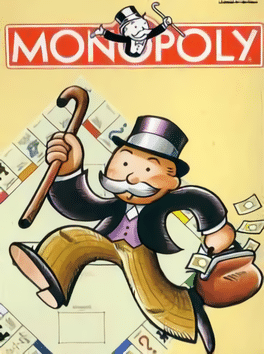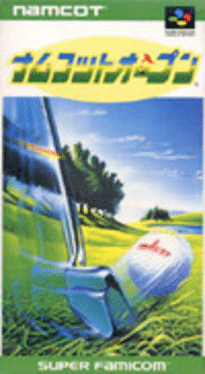Newest Super Famicom Games - Page 36
-
Taikyoku Igo: Goliath
1993
Taikyoku Igo: Goliath is a Miscellaneous game, published by Bullet Proof Software, which was released in Japan in 1993. -
Super Dunk Star
1993
Super Dunk Star
1993
Super Dunk Star is a basketball game somewhat based on the NBA but with entirely fictional teams. Most of the action is depicted NBA Jam style, with a horizontal view of the court and large sprites for the athletes. Upon scoring a field goal from up close (slam dunks or otherwise), the camera briefly changes to a dynamic shot of the basket. The game was developed by C-Lab and published by Sammy Studios exclusively in Japan. -
Ryuuki Heidan Danzarb
1993
Danzarb is a quirky sci-fi mecha RPG. It´s segmented into chapters or episodes, each having a minigame or puzzle for you to solve. In one, for example, you´re tasked with locating a bunch of ID card segments then you have to do a little sliding puzzle to put them together. In another, you collect clues to a time bomb defuse sequence from enemy soldiers, and you have to piece them together in a logic puzzle to decode the sequence. -
The Mahjong Touhai-den
1993
The Mahjong Touhai-den is a Miscellaneous game, developed by Khaos and published by Video System, which was released in Japan in 1993. -
Dual Orb
1993
Dual Orb
1993
In an alternate reality, in a parallel world, there are humans just like in the universe we dwell in. Those humans used to co-exist peacefully with animals, fairies, and dragons - other inhabitants of the world. The dragons were the wisest, most ancient, and most powerful race of all. But humans feared their wisdom and their strength, and lost contact to them, destroying the balance in the world. Now, only a few dragons remained, and their whereabouts are shrouded in mystery... You control Ralph, a young fighter apprentice who lives with his old master in a small house near a village. It is the day of your graduation, and the master sends you to meet a very important person. When you arrive at this person's hut, you are spoken to by the spirit of a mighty dragon, the creator of the universe! You, the young adventurer, is chosen to stop an evil spirit who tries to destroy the universe, and as a token you receive a magic Orb, which contains the soul of the great dragon. And there your adventure begins... Dual Orb i -
Edo no Kiba
1993
Edo no Kiba
1993
Tokyo, 2050 AD. Terrorists are running wild in the streets, and only one armored police officer is fast enough to hunt them down. In Edo no Kiba you are always moving forward, either running or walking (or, in some levels, flying), although you can still move around the screen as in most belt-scrolling games. Your avatar attacks by slashing to the right with his energy sword, and he can also hold his sword defensively to deflect some bullets. By then holding forward and releasing attack he can throw the sword like a boomerang. He can also jump. A bomb follows the avatar around on any on-foot level that can be used to destroy all enemies onscreen at any time, and it will be replaced whenever a life is lost. Environments range from city streets to sewers and a flying battleship. Each level ends with a boss fight against an enemy that can withstand many attacks. -
Action Pachio
1993
Action Pachio
1993
The player takes control of a white Pachio and tries to make his way through all the side-scrolling levels. In between each level is a cut scene that updates the story for the player. Players can collect coins in the game; collecting 100 of them results in an extra life. They are also given a life bar with three different colors (symbolizing how "healthy" the character is), a time limit, and a relatively generic score indicator that goes up to 99 million points. -
Captain Tsubasa IV: Pro no Rival-tachi
1993
Captain Tsubasa 4: Pro no Rival-tachi is the fourth sequel of the original Captain Tsubasa videogame series by Tecmo. It's a direct sequel of Captain Tsubasa 3: Koutei no Chousen and released exclusively in Japan for Nintendo's Super Famicom on April 3, 1993. -
The Great Battle III
1993
The Great Battle III
1993
The Great Battle III is a scrolling brawler featuring the F91 Gundam, Kamen Rider, Ultraman and the Great Battle series's original character Fighter Roar. The game is set in a fantasy world and the characters all use medieval weaponry in battle. The game is the third in the series of Great Battle brawler/shooter games, and the seventh Compati Hero Series game for the Super Famicom (of seventeen). -
The Shinri Game: Akuma no Kokoroji
1993
A quiz game focused around psychology and personality questions. It is the first in a series of "The Shinri Games", most of which came out on the Sony PlayStation. -
Ultra Seven
1993
Ultra Seven
1993
Ultra Seven is a 2D one-on-one fighting game that uses characters from the tokusatsu TV show of the same name. The Ultra Seven series is based on the original Ultraman TV show, but updated for a modern audience with a different protagonist who hails from the same planet as Ultraman. Ultra Seven features a single-player story mode in which the player can sometimes choose which of Ultra Seven's capsule monsters (Agira, Micras or Windom) to fight as, and a versus mode in which two players can duke it out. -
Tsuppari Oozumou: Risshin Shusse-hen
1993
Tsuppari Oozumou: Risshin Shusse-hen is a Sports game, developed and published by Tecmo, which was released in Japan in 1993. -
Super Wagyan Land 2
1993
Super Wagyan Land 2
1993
Super Wagyan Land 2 is an Action game, developed by Nova Games Ltd. and published by Namco, which was released in Japan in 1993. -
Jungle Wars 2: Kodai Mahou Atimos no Nazo
1993
Jungle Wars 2 is a Role-Playing game, developed by Atelier Double and published by Pony Canyon, which was released in Japan in 1993. -
Koutetsu no Kishi
1993
Koutetsu no Kishi
1993
Koutetsu no Kishi is a Strategy game, developed by Dual and published by Asmik Ace Entertainment, Inc, which was released in Japan in 1993. -
Wally wo Sagase! Ehon no Kuni no Daibouken!
1993
Wally wo Sagase! Ehon no Kuni no Daibouken! is a Puzzle game, developed by Natsu System and published by Tomy Corporation, which was released in Japan in 1993. -
Super Famista 2
1993
Super Famista 2
1993
Super Famista 2 is a Sports game, published by Namco, which was released in Japan in 1993. -
JoJo no Kimyou na Bouken
1993
The first JoJo-centric game released, it was never localized outside Japan. Production was done under Shinji Hashimoto. The game features some notable alterations to the story of Stardust Crusaders. The player controls the protagonists of Stardust Crusaders in a combination of Point and click adventure and classic third-person RPG. It is sometimes also referred to as a side-scrolling RPG. -
Monopoly
1993
Monopoly
1993
Monopoly is a Miscellaneous game, developed and published by Tomy Corporation, which was released in Japan in 1993. -
Namcot Open
1993
Namcot Open
1993
Namco Open is a Sports game, developed by TOSE and published by Namco, which was released in Japan in 1993.
